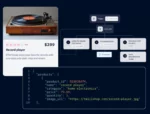Web Part connections are a popular out-of-the-box feature that enable users to connect Web Parts in such a way that selecting data from one Web Part can automatically perform an action on the data in a connected Web Part.
To set one up via the browser, users can simply manipulate the Web Part properties options and connect Web Parts that are on the same Web page. By now, most users are familiar with this feature and incorporate it into their organization’s SharePoint sites. What most users don’t know is that this is not the only option that is available to them. It is the only option via the browser, but if a user opens a SharePoint 2010 Web page in SharePoint Designer 2010, another Web Part connection option is available to them, connecting to a Web Part that is on a different Web page. Once done, users can filter and update data based on the connection.
What this looks like in the browser is that when two Web Parts, each on a separate page, are connected, the user clicks on the icon in the “Select” column of one Web Part and is automatically forwarded to the page for the other Web Part. When this redirect takes place, the data in the Web Part is updated based on the item that was originally selected.
The behavior is similar to the way wikis are built out, but rather than text being organized this way, we can now do the same with list data. This ability allows for the creation of more complex dashboard and Web Part page solutions. This feature is just one of many additional options available in SharePoint Designer 2010. When working with SharePoint sites, be sure to remember that the browser options aren’t always the only ones that are available to you.
For some more information regarding the creation of connections for Web Parts on separate pages, check out this video.
Chris Caravajal is a consultant with SharePoint911.





